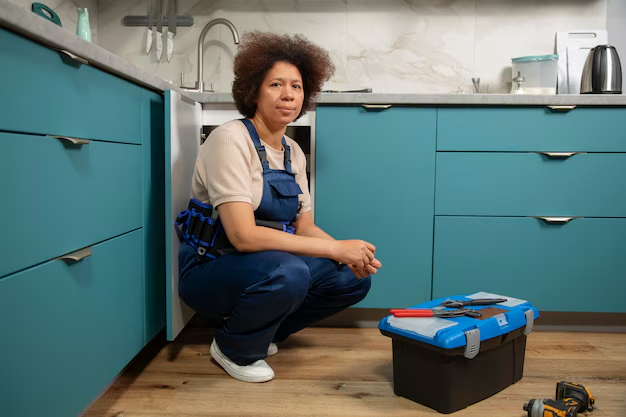Replacing Your Refrigerator Compressor: Is It a DIY Job You Can Handle?
Refrigerators are a crucial part of our daily lives, silently working day and night to keep our food fresh and beverages cold. But what happens when the refrigerator starts making strange noises or stops cooling altogether? In many cases, the culprit might be the compressor, the heart of your refrigerator's cooling system. Replacing a refrigerator compressor can seem daunting, but is it something you can tackle on your own? Let’s explore this question, covering everything from the role of the compressor to steps for replacement and related considerations.
🧊 Understanding Your Refrigerator Compressor
What Is a Refrigerator Compressor?
The compressor is the core component of your refrigeration system, responsible for circulating refrigerant throughout the appliance. It’s like the motor of a car, transforming refrigerant into a high-pressure gas and pushing it through coils and fans to cool the interior of the fridge.
Key Functions:
- Pressurizing Refrigerant: Turns low-pressure gas into high-pressure gas.
- Circulating Refrigerant: Moves the refrigerant through the system for consistent cooling.
- Temperature Regulation: Helps maintain the optimal internal temperature.
Signs Your Compressor Might Be Failing
Before jumping to replacement, it's essential to identify whether your compressor is indeed the problem. Some common signs of a failing compressor include:
- Unusual Noises: Loud humming or knocking sounds are indicators.
- Warm Fridge Interior: If your fridge isn’t cooling, the compressor might not be functioning.
- Overheating: The back of your fridge is excessively warm.
- Frequently Tripped Breaker: Electrical issues might be the source of the problem.
🔧 Can You Replace It Yourself?
The Complexity of Replacing a Compressor
Replacing a refrigerator compressor is not a typical DIY project due to its complexity and the necessity for specialized equipment. Here are some reasons why it is challenging:
- Technical Skill Required: Changing a compressor involves electrical wiring and refrigerant handling.
- Safety Concerns: Working with refrigerants poses health risks and requires adherence to environmental regulations.
- Specialized Tools Needed: Includes recovery systems, gauges, and vacuum pumps.
Steps for Replacing a Compressor
If you’re determined to attempt the replacement, here are the basic steps involved:
Preparation:
- Unplug the Refrigerator: Ensure safety by disconnecting it from the power source.
- Purchase Correct Parts: Confirm you have the correct replacement compressor compatible with your model.
Safety Precautions:
- Wear Protective Gear: Goggles and gloves are essential for dealing with refrigerants and electrical components.
- Handle Refrigerants Properly: Capture and dispose of refrigerants following legal guidelines.
Removing the Old Compressor:
- Access the Compressor: Usually located at the back or bottom of the fridge.
- Disconnect Wiring and Refrigerant Lines: Use appropriate tools to safely sever connections.
Installing the New Compressor:
- Mount the Compressor: Secure it in place and then reconnect the wiring and refrigerant lines.
- Replace Refrigerant: Charge the system with the appropriate refrigerant type and quantity.
Testing:
- Restore Power: Plug the fridge back in and allow it some time to stabilize as you check for cooling efficiency.
DIY or Professional Help?
Despite detailed guides, compressor replacement should ideally be left to professionals. This task requires proficiency in handling hazardous materials and aligning intricate system components correctly. Errors in installation could lead to further damage or void warranties.
💡 Considerations Before Taking the Plunge
Cost vs. Replacement
An essential factor to consider is the cost of replacement versus simply buying a new fridge. Professional compressor replacement can be costly but may offer longevity to your appliance if done correctly. In contrast, purchasing a new refrigerator could be a financially sound decision depending on the age and condition of your current model.
Refrigerant Regulations
Regulations for handling and disposing of refrigerants are strict to prevent environmental damage. Ensure that any action you take is compliant with local environmental law, which typically means hiring a licensed technician for refrigerant-related work.
Warranty Voidance
Before proceeding with a DIY repair, check your refrigerator’s warranty status. Most warranties stipulate that repairs should be conducted by certified professionals to avoid voidance.
🏠 Related Refrigerator Maintenance Tips
Maintaining a refrigerator properly can potentially extend its life and prevent compressor issues. Here are some maintenance pointers:
- Routine Cleaning: Keep coils at the back dust-free to improve efficiency.
- Balance Temperature: Avoid excessively low settings that strain the compressor.
- Organize Interior: Don’t overstock as it hampers air circulation.
- Door Seals: Check and maintain seals for airtight closure reducing strain on the cooling system.
🔍 Summary: What You Need to Know
🎯 Deciding Factors:
- Highly technical; consider professional help.
- Weigh repair costs against getting a new refrigerator.
- Always adhere to refrigerant handling regulations.
✔️ Tips for Successful Management:
- Proactively maintain your fridge to avoid compressor fatigue.
- Explore your appliance warranty options before attempting extensive repairs.
🔗 Next Steps:
- If a replacement is necessary, consult a certified technician.
- Maintain a regular appliance care routine for optimal performance.
In conclusion, while replacing a refrigerator compressor is technically possible as a DIY project, the complexity, potential risks, and legal considerations often make hiring a professional the most prudent choice. This approach not only assures a comprehensive solution but also safeguards compliance with important regulations—ultimately providing peace of mind knowing your appliance is in good hands.
